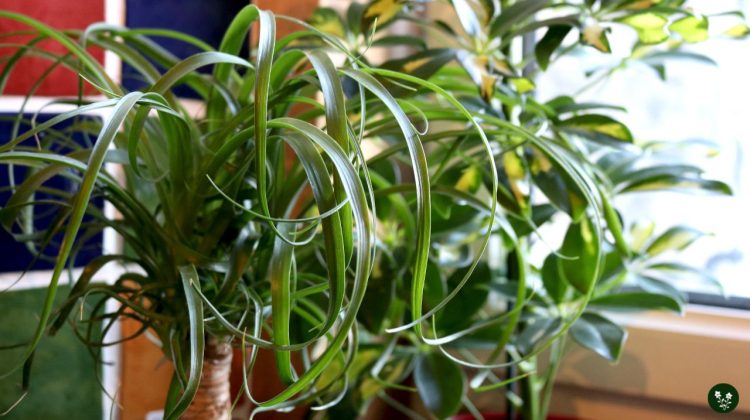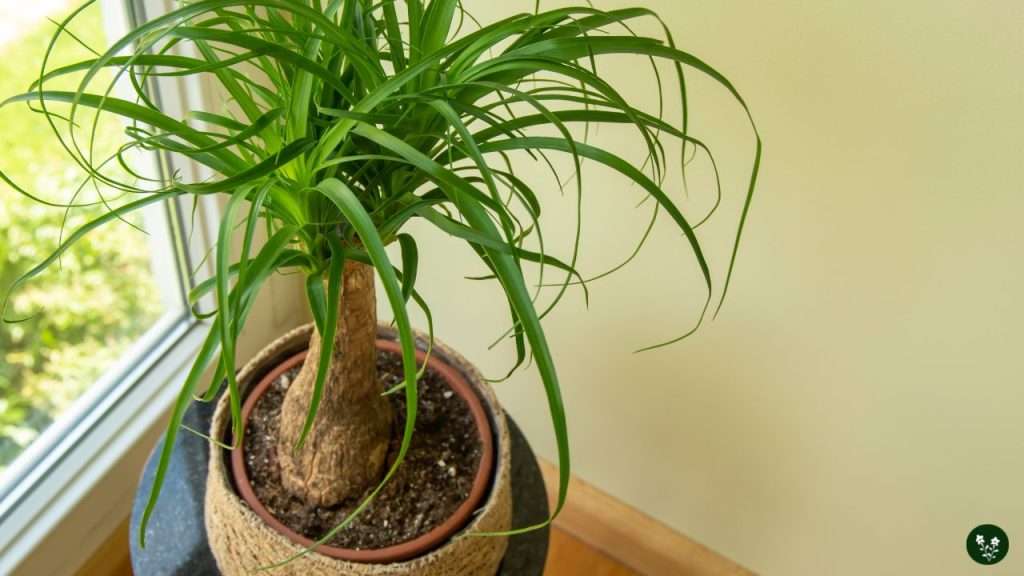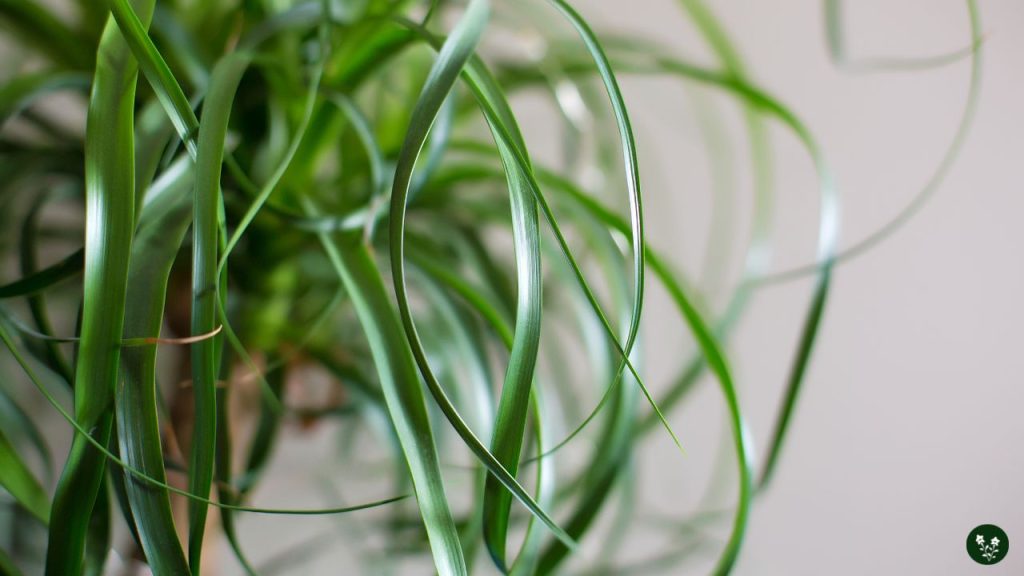
Ponytail Palms, also known as Beaucarnea recurvata, are unique and easy-to-care-for houseplants that add a touch of tropical elegance to any room.
Native to Mexico, these plants are often mistaken for palm trees due to their long, thin, and curly leaves that resemble a ponytail.
They are slow-growing plants that can reach up to 30 feet in height, but usually, they stay small enough to fit in a pot, making them an ideal choice for indoor gardening.
Regarding Ponytail Palm care, these plants are relatively low maintenance and can tolerate neglect, making them perfect for busy or forgetful plant owners.
They prefer bright, indirect sunlight but can survive in lower light conditions.
Additionally, they require well-draining soil and infrequent watering, as they are drought-tolerant plants that store water in their bulbous trunk.
However, there are a few things to remember when caring for a Ponytail Palm to ensure its health and longevity.
This article will explore the best practices for Ponytail Palm care, including watering, lighting, soil requirements, and repotting.
Whether you are a seasoned plant enthusiast or a beginner, this guide will provide all the information you need to keep your Ponytail Palm healthy, happy, and thriving.
In this article, we'll cover
1. Choosing a Location

Choosing the right location for your Ponytail Palm is crucial for its growth and health. Here are some factors to consider when choosing a location:
- Light: Ponytail palms prefer bright, indirect sunlight. Place the plant in a location with plenty of natural light, such as a south or west-facing window. However, be careful not to expose the plant to direct sunlight, which can scorch the leaves.
- Temperature: These plants are native to arid regions of Mexico, so they prefer warm temperatures. Keep the plant in a location that is between 60-80°F (16-27°C) during the day and above 50°F (10°C) at night.
- Humidity: Ponytail palms are adapted to dry conditions and do not require high humidity levels. However, they can benefit from occasional misting or placement near a humidifier.
- Space: Ponytail palms can grow up to 10 feet (3 meters) tall, so make sure you have enough space for them to grow. If you plan on keeping it indoors, choose a location with a high ceiling.
Choose a bright, warm, and spacious location for your Ponytail Palm to thrive.
With the right location and care, your plant can live for decades and become a stunning addition to your home or garden.
2. Watering and Soil
The Ponytail Palm is a drought-tolerant plant that requires very little water. Overwatering can cause root rot and harm the plant.
It is important to allow the soil to dry out completely before watering. During the growing season, water the plant every 7-14 days. In the winter, cut back on watering to once a month.
When watering the plant, soak the soil and allow the excess water to drain through the bottom of the pot. Do not let the plant sit in standing water. If the soil is still damp, wait a few more days before watering again.
The Ponytail Palm prefers well-draining soil. A cactus or succulent mix is ideal. If you are repotting the plant, use a pot with drainage holes.
It is important to note that the bulbous stem of the Ponytail Palm stores water, so the plant can go without water for extended periods.
Here are some tips for watering and soil care:
- Water the plant less frequently during the winter months
- Use a well-draining soil mix
- Avoid overwatering to prevent root rot
- Allow the soil to dry out completely before watering
- Do not let the plant sit in standing water
3. Fertilizing
Ponytail Palms are not heavy feeders but require some fertilizer to remain healthy. Here are some tips on fertilizing:
- Use a liquid fertilizer: Since Ponytail Palms are watered only sparingly, it is best to provide them with liquid fertilizer. This will help ensure that they receive the necessary nutrients.
- Fertilize once or twice per month during the growing season: Ponytail Palms should be fertilized more frequently during the growing season, which typically runs from spring through summer. Fertilize once or twice per month during this time.
- Fertilize once a month in winter: During the winter months, reduce the frequency of fertilizing to once a month.
- Water before fertilizing: Always water your Ponytail Palm well to prevent fertilizer burn.
When selecting a fertilizer, look for one balanced, with equal amounts of nitrogen, phosphorus, and potassium.
Avoid using fertilizers high in nitrogen, as this can cause the plant to grow too quickly and become weak.
Overall, fertilizing your Ponytail Palm is a simple process. Following these tips can help ensure that your plant remains healthy and vibrant.
4. Pruning
Ponytail palms are relatively low-maintenance plants that do not require regular pruning.
However, there may be occasions when pruning is necessary to maintain the plant’s health and appearance.
Here are some tips on how to prune a ponytail palm:
When to prune
Ponytail palms can be pruned at any time of the year, but it is best to do so during the growing season (spring until fall) when the plant is actively growing.
This will minimize the risk of damage to the plant.
Tools
Use sharp, clean scissors or pruning shears to make the cuts. Dull blades can damage the plant and increase the risk of infection.
How to prune
To prune your ponytail palm, identify the leaves or stems that need removal.
Cut as close to the base of the leaf or stem as possible without damaging the surrounding tissue. Avoid cutting too much at once, as this can shock the plant and slow its growth.
Why prune
Pruning can help promote new growth and maintain the plant’s shape. It can also help remove dead or damaged leaves or stems, which can attract pests and disease.
What to avoid
Avoid cutting the tips of the leaves, as this can damage the plant’s ability to produce new growth. Also, avoid over-pruning, weakening the plant and making it more susceptible to pests and disease.
Overall, pruning a ponytail palm should be done with care and caution. Only prune when necessary, and always use sharp, clean tools to minimize the risk of damage to the plant.
5. Propagation
Ponytail palms can be propagated through offsets, also known as pups. To propagate a ponytail palm, follow these steps:
- Identify a healthy offset that is at least 4 inches in height.
- Use a sterile knife to cut the offset from the parent plant.
- Plant the offset in a new pot with sand-based potting soil.
- Water the soil sparingly, making sure not to overwater.
- Place the pot in a bright, sunny location, but avoid direct sunlight.
It’s important to note that ponytail palms are slow-growing plants, so it may take some time for the offset to establish roots and start growing.
Propagation can also be done through seeds, but it’s more difficult and time-consuming.
To propagate through seeds, place them over two layers of damp paper towels and keep them in a warm, humid location.
Once the seeds have sprouted, plant them in a pot with sand-based potting soil and follow the same care instructions as with an offset.
Overall, propagating a ponytail palm is a rewarding process that allows you to expand your collection of these unique and interesting plants.
6. Pests and Diseases

Ponytail palms are generally low-maintenance and hardy plants but can still be susceptible to pests and diseases.
Here are some common issues to watch out for:
Pests
Mealybugs, spider mites, and scale insects are the most common pests that can infest ponytail palms. These pests suck the sap from the plant, which can cause the yellowing of leaves and stunted growth.
To prevent these pests from infesting your plant, regularly inspect your plant for signs of infestation and isolate any infected plant from healthy plants.
You can also control these pests by spraying your plant with insecticidal soap or neem oil.
Diseases
Ponytail palms are generally resistant to diseases but can still be affected by fungal infections such as root rot, stem rot, and leaf spot disease.
These diseases can be caused by overwatering, poor drainage, or high humidity. To prevent these diseases, ensure your plant is in well-draining soil and avoid overwatering.
If you notice any signs of disease, such as brown spots on leaves or a foul smell from the soil, isolate the infected plant and treat it with a fungicide.
Another common disease is Southern Blight, caused by a fungus that attacks the plant base.
A white, cotton-like growth on the base of the stem can identify this disease. To prevent Southern Blight, ensure your plant is not overwatered and avoid planting it too deep in the soil.
If you notice any signs of Southern Blight, remove the infected plant and treat the soil with a fungicide.
Regularly inspecting your plant and taking preventative measures can keep your ponytail palm healthy and free from pests and diseases.
Conclusion
The Ponytail Palm is a low-maintenance plant that is perfect for beginners. It tolerates neglect and can survive in various light and temperature conditions.
However, it still requires some basic care to thrive.
It is important to let the soil dry out completely between waterings when it comes to watering. Overwatering can lead to root rot and other issues.
Fertilization is also important but should be done sparingly. Too much fertilizer can harm the plant.
Providing the right soil and pot is also crucial for the health of your Ponytail Palm. Use a well-draining succulent mix and a pot with drainage holes to prevent water from sitting in the soil.
Overall, with a little attention and care, your Ponytail Palm will continue to thrive and bring a unique touch of green to your home or office.
Leave a Reply